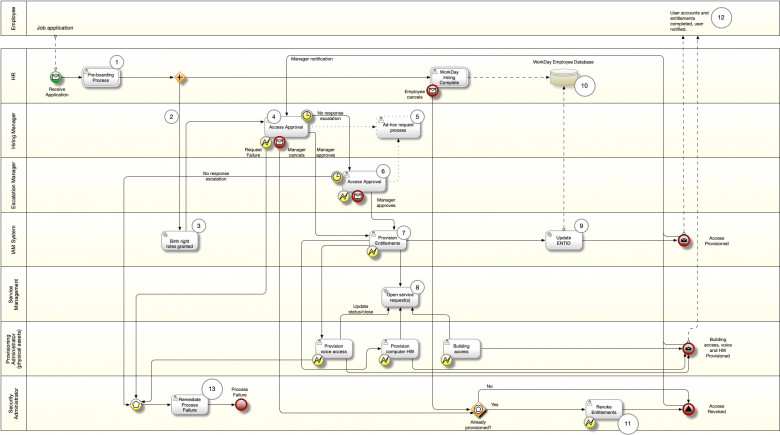
This is the first in series of articles dedicated to detailed overview of processes and components of enterprise identity and access management (IAM). These articles are designed to help technical architects and system designers to better understand what is involved in complex business processes which drive identity management and provide detailed review of all critical components.
Solid understanding of identity management business processes before implementation of a new IAM system very often makes a difference between success and failure and it must be worked out and agreed to by all key participant before implementation can start.
This review does not address specific software configurations and settings required to support these processes and workflow, but any modern identity management software will be able to support them.
Diagram below documents workflow for an employee on-boarding which is one of the core identity management processes to support new employee who is joining the company. The flow is designed to be integrated into existing hiring process and provide logical and physical access to an employee by day one of the employment.

